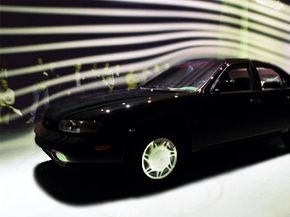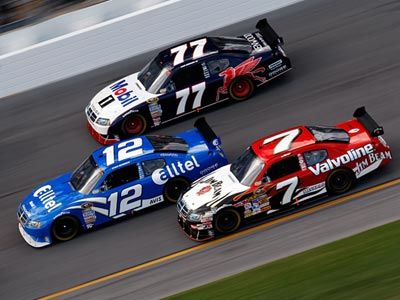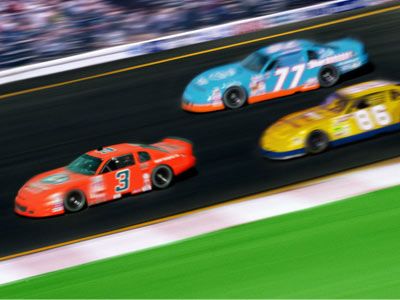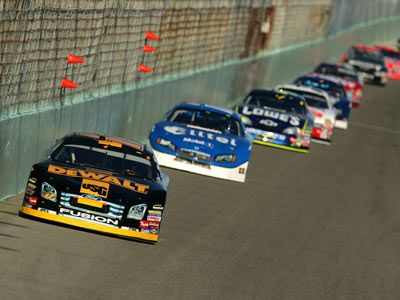Today's fleet of cars is a vast improvement over the ornamental tailfins and boxy structures of yesteryear. The modern, curvaceous designs minimize the force that air creates against the car's motion, and the result is a sleeker, faster car. Because speed is, obviously, the main factor in NASCAR races, aerodynamics is a crucial element in stock car design.
Aerodynamics is the study of how air moves -- especially how it interacts with solid, moving objects. Just as a speedboat leaves the sharp line of a wake trailing behind it on the water, an automobile creates an aerodynamic impact as it slices through the air.
Advertisement
Automotive designers and NASCAR teams rely on aerodynamic principles to create improvements in the power and handling of vehicles at high speeds. Passenger cars have become more shapely over the years as manufacturers discovered how streamlining can increase fuel efficiency, allowing a car to travel at the same speed using less horsepower. These designs reduce air resistance, or aerodynamic drag.
In the world of auto racing, it might be more important to augment the downward force the air exerts on the car's wheels. This downforce is the key to maintaining traction through the tight and constant turns of a short-track race.
The discovery of the mysterious powers of downforce in recent decades sent the auto racing world into a frenzy of wind-tunnel testing and subtle tweaking of stock car bodies. It has changed the culture and practice of car racing in ways some fans find infuriating. NASCAR has had to step in and carefully regulate the aerodynamic features of each vehicle in competition to keep a level playing field.
Even casual fans are constantly exposed to the terminology of automotive aerodynamics. This article will demystify NASCAR lingo, starting with the phenomenon of aero push.
Advertisement



